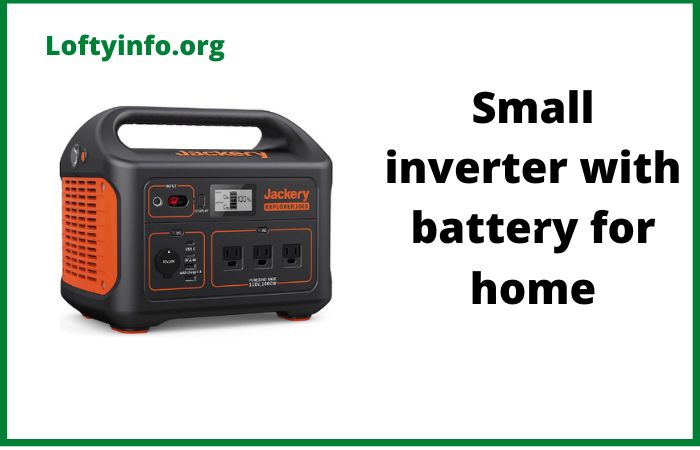Bluetti AC200P Problems And Solutions
The Bluetti AC200P portable power station has gained significant popularity among outdoor enthusiasts and homeowners seeking reliable backup power solutions.
This 2000-watt solar generator features a 2000Wh lithium iron phosphate battery and multiple charging options that make it versatile for camping, emergency situations and off-grid applications.
While the AC200P receives mostly positive reviews from users, several recurring problems have been reported that potential buyers should understand before making a purchase decision.
Understanding these issues and their solutions can help you determine whether this power station meets your specific needs and how to troubleshoot problems if they arise.
Bluetti AC200P Problems And Solutions
1) Solar Charging Failure and Error Code 002
One of the most frustrating problems reported by AC200P owners involves solar charging failures accompanied by error code 002.
This error indicates that photovoltaic cells are not connected properly, and while the device can still discharge power, it will not store a charge from solar panels.
Many users have encountered this error message even when no solar panels are connected to the unit, which points to a deeper underlying issue.
The primary cause of this problem stems from a faulty MPPT charge controller within the unit.
The defective controller causes the battery to expect a solar charge when there is none present.
Poor connections at the charging port can trigger this error. The AC200P requires solar input voltage between 35V and 150V, and insufficient voltage from your panels can also lead to charging failures.
To resolve solar charging issues, first check that your adapter is plugged in securely and inspect the charging port for any obstructions or debris.
Clean the port carefully and ensure the plug makes solid contact.
If the error persists, restart the device by holding the power button for several seconds until it shuts down completely, then power it back on.
When connecting solar panels in series, verify that your total voltage meets the minimum 35V requirement.
Users have found that insufficient voltage prevents the Bluetti from accepting a reasonable charge and the unit itself uses some of that charge to operate.
If these troubleshooting steps fail to resolve the issue, contact Bluetti customer support as the MPPT controller may need replacement or repair.
2) LCD Display Screen Malfunction
The LCD display screen failure represents another significant problem that leaves users unable to monitor or control their AC200P effectively.
Users report that after the unit’s charge drops to zero percent, the LCD no longer turns on when plugged into wall power, generator or solar panels, with only the power button LED illuminating briefly before turning off.
In other cases, the display lights up but shows no information, with all readings displaying zero despite the unit appearing to function.
Several factors can cause display malfunctions. Direct sunlight exposure can damage the screen over time, as the resistance touchscreen is sensitive to heat and UV radiation.
Poor internal connections between the display and the main circuit board can develop due to shipping damage or regular vibration during transport.
Low battery voltage can also prevent the display from powering on properly, creating a situation where you cannot determine the actual charge level.
To troubleshoot display issues, first ensure the unit has sufficient charge by connecting it to AC power for at least 24 hours.
Press the power button firmly and hold for 2-3 seconds to ensure proper startup. If the screen remains blank, try disconnecting all inputs and outputs, then restart the device.
Some users found their screens started working again after a day of being turned on and off repeatedly while disconnecting and reconnecting solar panels.
Store and operate the unit away from direct sunlight to prevent heat damage to the display.
If the screen still fails to function after these steps, the issue likely requires professional repair or replacement, as internal connector problems or damaged display hardware cannot be fixed by end users.
3) Unexpected Shutdowns and Temperature Control Issues
Random shutdowns plague some AC200P users, particularly in situations where reliable power is most critical.
Temperature control issues cause the device to shut off unexpectedly, with error code E021 appearing even at normal room temperature.
This problem stems from malfunctions in the NTC resistor, which monitors internal temperatures and triggers protective shutdowns.
The NTC resistor in the AC200P is fragile and prone to damage during shipping or from regular vibration and impacts.
When this sensor fails or returns inaccurate readings, the battery management system receives false temperature data.
The resistor may break during shipping, causing error code E021 to trigger protective shutdowns at normal temperatures when severe temperature protection should not activate.
Blocked ventilation ports can cause genuine overheating that triggers legitimate shutdowns.
When experiencing unexpected shutdowns, first check that all ventilation ports on the unit are clear of obstructions and dust.
Position the AC200P on a flat, stable surface away from heat sources and direct sunlight. Turn off the unit completely and allow it to rest for 30 minutes to cool down. Restart the device and monitor whether shutdowns continue to occur.
Access the fault history through the LCD screen menu to identify which error codes have been triggered. If error code E021 appears repeatedly at room temperature, this indicates a faulty NTC resistor that requires professional repair.
Some users have successfully resolved intermittent shutdown issues by updating the firmware through the Bluetti app, as software bugs can sometimes cause false temperature readings. F
or persistent problems, contact Bluetti support with your error code history and temperature readings from the display.
4) Battery Charging and Capacity Issues
Battery-related problems frustrate AC200P owners who discover their unit either will not charge to full capacity or loses charge unexpectedly.
Some units charge to around 25 percent and then jump directly to 100 percent, storing only 400-500 watt-hours regardless of whether charging occurs via AC adapter, car charger or solar panels.
Other users report that battery levels drop dramatically even when nothing is plugged in, sometimes losing up to 50 percent charge in just a few hours.
These charging issues typically result from battery management system calibration errors that cause inaccurate state-of-charge reporting.
Individual battery cells within the pack can become unbalanced over time, particularly if the unit has been stored at very low charge levels for extended periods.
BMS over-voltage and low-voltage faults can cause the unit to start up, beep, display fault codes for issues like fault 42 and fault 43, then shut down after only 15 seconds.
Physical damage to battery cells or BMS components can also prevent proper charging cycles.
To address charging problems, start by completely discharging the AC200P by running appliances until it shuts itself off. Then charge it to 100 percent without interruption using the AC wall adapter, avoiding any usage during this charging cycle.
Repeat this full discharge and recharge cycle two or three times to recalibrate the BMS and rebalance the cells. Store the unit at 50-60 percent charge when not in use for extended periods, and maintain it by fully charging at least once per month.
Check that you are using the original Bluetti AC adapter, as third-party chargers may not provide proper voltage and current.
If the unit displays specific fault codes 42 or 43 for BMS voltage issues, these typically indicate serious problems requiring professional service, as attempting to repair BMS issues yourself can be dangerous and void your warranty.
5) Inverter Efficiency Problems with Low Loads
The AC200P’s inverter performance issues become apparent when powering small appliances, leading to faster-than-expected battery drain and automatic shutdowns.
Users notice that a 70-watt mini fridge seems to consume more power than it should, and the battery drains much faster than expected calculations would suggest.
The large 2000-watt pure sine wave inverter creates this problem through its inherent inefficiency when handling low power draws.
Inverters convert DC battery power to AC power, but this conversion process always involves some energy loss as heat. The AC200P’s inverters are inefficient when power draw is low, meaning the smaller the appliance you plug in, the higher the inverter power losses become.
When you run a small 50-watt device through the 2000-watt inverter, the conversion losses can consume nearly as much power as the device itself.
The eco mode setting compounds this issue by automatically shutting off AC power after four hours when load remains below 50 watts, which can interrupt devices you intend to run continuously.
To maximize efficiency with the AC200P, always try to draw at least 800 watts from the inverter when using AC outlets.
You can achieve this by running multiple appliances simultaneously or by powering high-draw devices like coffee makers, microwaves or power tools.
For small appliances like CPAP machines, mini fridges and lights, use the DC outlets to bypass the inverter entirely. If your device does not accept DC power directly, you can purchase a DC to AC adapter designed for your specific appliance, which will be much more efficient than using the main inverter.
Disable eco mode through the settings menu if you need to run low-wattage devices continuously without automatic shutdowns.
When planning your power usage, remember that inverter losses mean the actual runtime will be significantly shorter than simple watt-hour calculations suggest when running small loads.
6) Wireless Charging Pad Limitations
The wireless charging capability on top of the AC200P sounds convenient but proves problematic in practical use.
The charging area is small and requires you to keep your phone perfectly centered for it to charge, with any movement disrupting the charging process.
This becomes especially frustrating when using the power station outdoors or during travel when the unit sits on uneven surfaces.
The wireless charging coils underneath the pads have a very limited range, requiring precise alignment between your device and the charging spot.
The shared 15-watt output between both pads means charging speeds drop significantly when charging two devices simultaneously.
Vibration from the cooling fans inside the unit can cause phones to shift position and lose contact with the charging coils.
The area where charging coils are located is so small that even the slightest shift will stop the generator from charging your phone.
For reliable wireless charging, always place the AC200P on a level, stable surface before positioning your device on the charging pad.
Mark the optimal charging position with a small piece of tape or a sticker so you can quickly center your device correctly.
When traveling or in situations where the surface is uneven, avoid using wireless charging altogether and charge your phone through the USB ports instead. The USB ports provide faster, more reliable charging that will not be interrupted by movement or vibration.
If you must use wireless charging while mobile, consider using a phone case with a grippy surface to help prevent sliding, and check periodically to ensure charging has not stopped.
Conclusion
The Bluetti AC200P offers impressive capacity and features for a portable power station, but these common problems deserve consideration before purchase.
Solar charging failures, display malfunctions, unexpected shutdowns, battery capacity issues, inverter inefficiency and wireless charging limitations can all impact user experience.
Many of these issues have straightforward troubleshooting solutions that users can perform themselves, while others require professional repair or replacement.
Understanding these problems helps you make an informed decision about whether the AC200P suits your needs and prepares you to address issues quickly if they occur.
Regular maintenance including monthly charging cycles, proper storage practices and keeping firmware updated can prevent many of these problems from developing.
When issues do arise that cannot be resolved through basic troubleshooting, Bluetti’s customer support should be contacted promptly, especially for units still under warranty.
Despite these drawbacks, many users find the AC200P’s combination of capacity, solar charging capability and power output makes it a valuable addition to their emergency preparedness or off-grid power systems.
What to do when Livguard inverter battery is not charging
What can happen when an inverter overloads
How to choose solar system type wisely and avoid funds wastage
Luminous inverter auto cut problem





